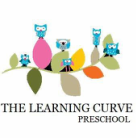Developmental Readiness
Is Your Child Developmentally Ready?
Our program is designed for children between 3 and 6 years of age. All children are different, and some are developmentally ready to begin at 3, whereas others will be more successful if they wait until they are a little older. The following are examples of behaviors we see in children who are ready to begin our school. Here at The Learning Curve Preschool, we encourage you to thoughtfully consider if your child:
Our program is designed for children between 3 and 6 years of age. All children are different, and some are developmentally ready to begin at 3, whereas others will be more successful if they wait until they are a little older. The following are examples of behaviors we see in children who are ready to begin our school. Here at The Learning Curve Preschool, we encourage you to thoughtfully consider if your child:
- is independent in the bathroom. Children should be comfortable using the toilet and be able to clean up and wash hands on their own. However, we understand that most 3 and 4 year olds have occasional accidents and we handle these in a relaxed and low-key manner.
- is able to sit at circle time and listen to stories and engage in activities. A child who is too young will not be able to attend to group situations, sit for stories, participate in games, etc.
- will take suggestions from the teacher of activities (s)he is ready for. A child who is not ready will pull away from the teacher when she offers her/him hand, or will display unwillingness to go with the teacher by lying on the floor, running away, hitting, fussing etc.
- is willing to let the teacher help her/him complete the work cycle: i.e. take out an activity, complete it, and put it away. Children who are too young for this type of classroom are easily distracted by other activities within sight. They will take out many activities, work on them for only a very short amount of time, move on to something else without putting the previous activities away, and refuse the assistance of a teacher.
- is able to follow simple directions like lining up and walking from one place to another, washing hands, putting on a coat to go outside. Children do not have to be able to do these things perfectly, but they should be willing to listen to instructions on how to do these things, and begin to follow those instructions.
- is able to communicate needs to the teacher and other children appropriately. Children who are too young will simply cry when they need something, and will be very frustrated in an environment that is not meeting their needs.

